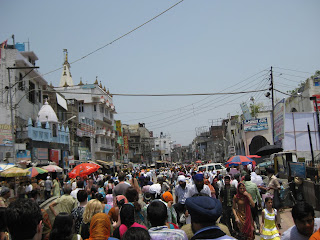This act applies to the Municipal Corporation of Delhi (MCD), which governs nine districts of Delhi (covering a population of roughly ten million people),and the behavior of its 272 councilors is central to our project's research. Sheila Dikshit, the Chief Minister of Delhi, has proposed recently to split the MCD into three distinct entities, while increasing the number of councilor seats reserved for women to fifty percent. Should the proposal be implemented successfully, it will be interesting to observe where possible how the major political parties react in choosing female candidates and potentially shuffling male politicians across wards, as the increased reservations would likely rotate among wards over time.
A particularly inspiring related piece of journalism can be found online at:
http://post.jagran.com/mcd-hike-of-women-reservation-worries-political-parties-1306937088.
It is difficult to imagine that in a city such as Delhi that there could truly be a "crisis of apt women candidates in the civic body elections". Also, the claim that "according the sources [without reference, of course], 75 per cent of the total women councilors are either wife of the legislators or their relatives" is hopefully just evidence of shoddy reporting. If not, then the actual benefit to women of the increase in reservations sadly seems greatly hampered by the fact that the women put forth for election will be for the most part mere proxies for their male relatives, and not actually the most qualified female candidates.













